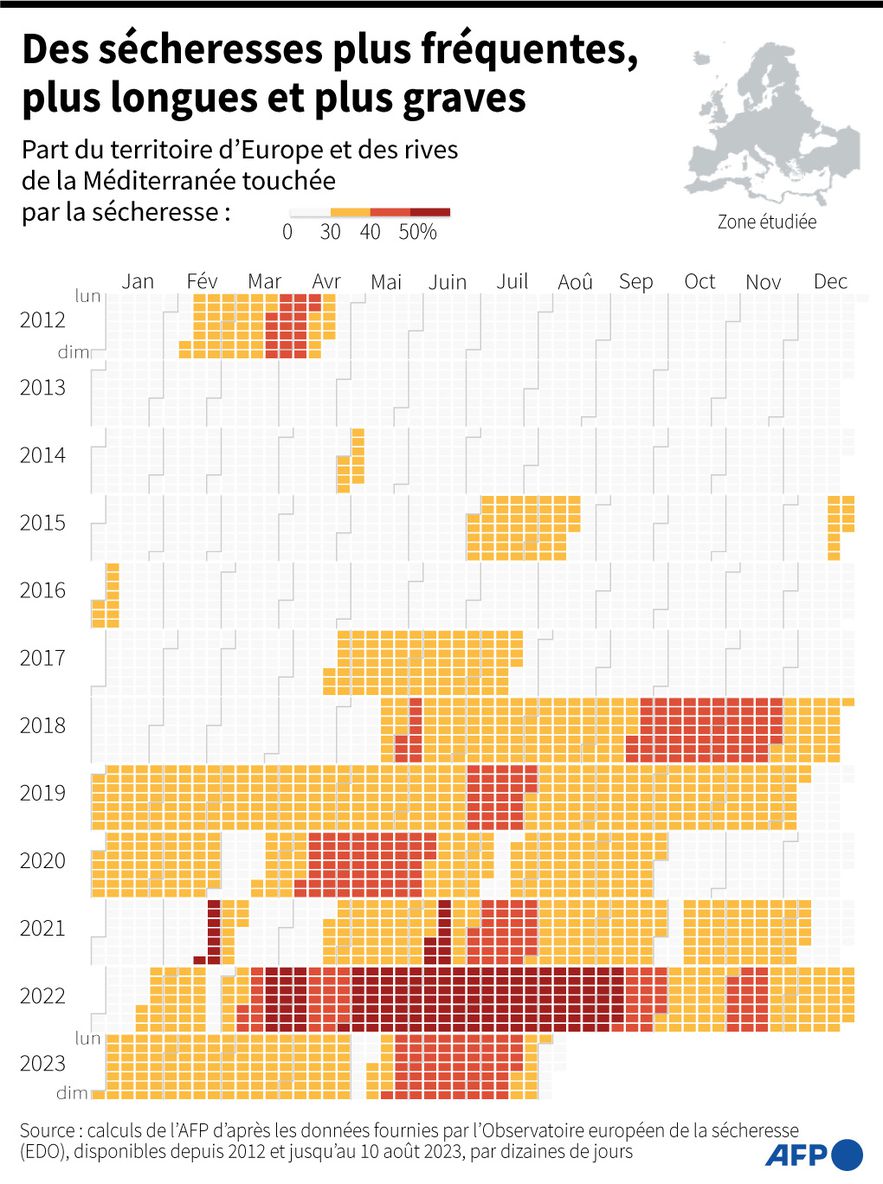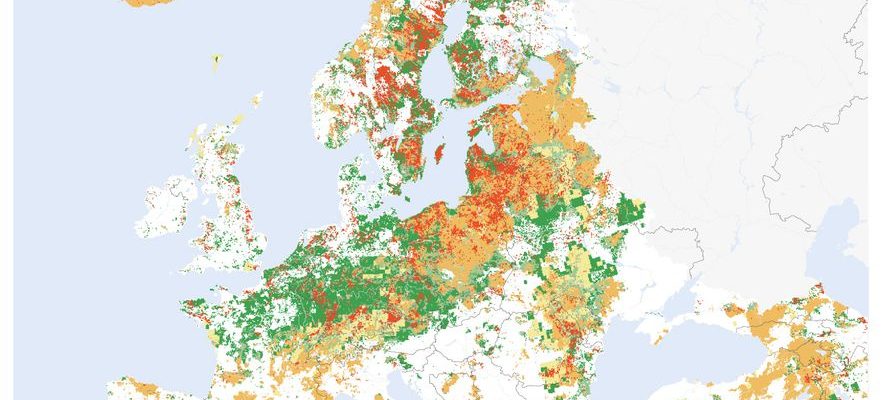In the heart of summer, Europe finds a little color. Despite the heat wave affecting part of the continent, the drought in early August fell to its lowest level since the beginning of 2022 in Europe and along the entire Mediterranean coast, according to the latest data from the European Drought Observatory (EDO), an organization European monitoring of the phenomenon.
Since the middle of June, the soil water situation has improved, but only on the surface. From August 1 to 10, soil drought affected 28% of European territory and the Near Eastern and African coasts of the Mediterranean, when last year at the same time, drought was twice as widespread (55.8% ). Faced with a significant lack of water in the winter period, a good part of the European continent was able to benefit from rains. Thus, since the beginning of August, the countries of central Europe, which were very affected at the start of the summer, have gradually emerged from their episode of drought, with 26% of land affected in Germany (compared to 96% at the peak) and 67 % in Poland (compared to 95%). In France, the trend is the same: 21% of the land was affected at the beginning of August, against 64% at the beginning of June.
French aquifers in deficit
Map of Europe and the shores of the Mediterranean locating the regions affected by drought between August 1 and 10, 2023, according to the European Drought Observatory
© / AFP
But this good news should not hide the reality of the crisis that continues underground, where groundwater is still very low. Because if the European indicator, updated approximately every ten days, is based on anomalies in precipitation, soil moisture and the state of vegetation, depending on the region and type of climate, it does not take into account the level of groundwater, which remains for example in France at an abnormally low level.
According to Bureau of Geological and Mining Research (BRGM), 72% of groundwater levels remain below monthly normals, and the situation continues to deteriorate. The fault is the rains, which contribute to the humidification of the soil on the surface – and reduce the use of irrigation – but which do not infiltrate deep into the groundwater. “The rains that fell during sometimes violent stormy episodes promote runoff and infiltrate little into the soil”, underlines the latest BRGM bulletin, which adds that the rains first benefited the humidification of the soil and the vegetation. To recharge the water tables, the rains need to be long and regular, the time of infiltration of the water up to certain water tables being able to last three months.
Increased frequency of droughts
According to the European Drought Observatory, at the beginning of the month, the most affected countries were Lithuania (84%), Armenia and Iceland (82%), and Estonia (76%). And, even if certain regions are still displayed in red on the EDO map, in northern Europe, Denmark, Sweden or Finland have seen their situation improve markedly, after a month of June extremely dry.

Proportion of European territory affected by drought, per day, since 2012 according to EDO data
© / AFP
If the drought of the soil is less severe this year, after an extremely arid year 2022, the recent data remain exceptional. The proportion of land affected by drought has very rarely fallen below 30% since the spring of 2021. A sign of this acceleration of episodes, since 2018, soil dryness has exceeded 40% for at least one month each year. . A reality that should lead to changes in uses: according to the World Resources Institute (WRI), among the countries facing “extremely high water stress every year” are Greece and Belgium. In question, industrial demand, which represents nearly 90% of all water needs.
